From inside (document excerpt):
User and Operator’s Manual for 2005 Hyundai Tiburon. Engine Type: 2.0 L (4-Cylinder, In-line DOHC CVVT) and 2.7 L (6-Cylinder, V-type DOHC). Hyundai Coupe Free PDF Service and Owner’s Manual Download.
Table of contents
Features of your Hyundai
Driving your Hyundai
What to do in an emergency
Corrosion prevention & appearance care
Vehicle maintenance requirements
Do-it-yourself maintenance
Emission control systems
Consumer information, reporting safety defects &
Binding arbitration of warranty claims
Vehicle specifications
Index
INSTRUMENTS AND CONTROLS
1. Electronic Stability Program (ESP) Switch (If installed)
2. Panel Brightness Control Knob
(Rheostat Switch)
3. Multi-Function Light Switch
4. Windshield Wiper/Washer Switch
5. Front Fog Light switch (If installed)
6. Hazard Warning Switch
7. Digital Clock
8. Passenger’s Air Bag
9. Glove Box
10. Hood Release Lever
11. Fuse Box Relay
12. Steering Wheel Tilt Lever (If installed) 13.Horn and Driver’s Airbag
14. Cruise Control Switch (If installed) 15.Heating and Cooling Controls 16.Ashtray
17. Cigarette Lighter
18. Shift Lever
19. Audio System (If installed)
20. Parking Brake Lever
21. Center Console
YOUR VEHICLE AT A GLANCE
INDICATOR SYMBOLS ON THE INSTRUMENT PANEL
Turn Signal Indicator Lights Tail Gate Open Warning Light
ABS Service Reminder Indicator (SRI) (If installed) SRS (Airbag) Service Reminder Indicator (SRI)
High Beam Indicator Light Malfunction Indicator Light
Low Oil Pressure Warning Light Seat Belt Reminder Light and Chime
Parking Brake/ Low Brake Fluid Level Warning Light CRUISE Indicator Light (If installed)
Charging System Warning Light CRUISE SET Indicator Light (If installed)
Door Ajar Warning Light and Chime Electronic Stability Program (ESP) Indicator Lights (If installed)
Low Fuel Level Warning Light
* More detailed explanations of these items will be found beginning on page 1-36.
FEATURES OF YOUR HYUNDAI
Fuel Recommendations. 1-21Breaking in Your New Hyundai. 1-3
Keys. 1-3
Door (Teft-Alarm System). 1-4, 1-6
Power Windows. 1-8
Seats. 1-9
Seat Belts. 1-14
Child Restraint System. 1-20
Supplemental Restraint (AIRBAG) System (SRS). 1-26
Instrument Cluster and Indicator Lights. 1-34
Warning and Indicator Lights. 1-36
Multi-Function Light Switch. 1-45
Windshield Wiper/Washer Switch. 1-47 1Sunroof. 1-53
Mirror. 1-56
Hood Release. 1-59
Cruise Control. 1-65
Audio Remote Control Switch. 1-67
Heating and Cooling Control. 1-69
Stereo Sound System. 1-86
Audio System. 1-88
Antenna. 1-125
INSTRUMENT CLUSTER AND INDICATOR LIGHTS
1. Speedometer
2. Turn Signal Indicator Light
3. Odometer
4. Automatic Transaxle Position Indicator Light (If installed)
5. Coolant Temperature Gauge
6. Trip odometer
7. Fuel Gauge
8. Tachometer
9. Electronic Stability Program (ESP) Indicator Light (If installed) 10. Trip Odometer Reset Knob
11. Charging System Warning Light
12. Supplemental Restraint System (SRS) Service Reminder Indicator (SRI)
13. Seat Belt Warning Light
14. High Beam Indicator Light
15. Low Oil Pressure Warning Light
16. Malfunction Indicator Light (MIL)
17. Low Fuel Warning Light
18. Parking Brake/Low Brake Fluid Level Warning Light 19. CRUISE Indicator Light (If installed)
20. CRUISE SET Indicator Light (If installed) 21. Tail Gate Open Warning Light
22. Door Ajar Warning Light
23. ABS Service Reminder Indicator (SRI) (If installed)
Heating and Cooling Controls TYPE A (Without Air Quality System) TYPE B (With Air Quality System)
1. Temperature Control Button
2. Air Conditioning Switch
3. Display Window
4. Fan Speed Control Switch
5. Air Flow Control Switch
6. AUTO (Automatic Control) Switch
7. Defroster Switch
8. OFF Switch
9. Air lntake Control Switch
10.Ambient Temperature Switch
11.Rear Window Defroster Switch
12.Air Quality System Switch (If installed)
Publisher: Hyundai Motor America


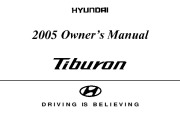 2005 Hyundai Tiburon Owners Manual, 2005 - 1 of 262
2005 Hyundai Tiburon Owners Manual, 2005 - 1 of 262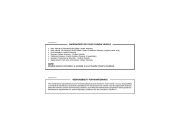 2005 Hyundai Tiburon Owners Manual, 2005 - 2 of 262
2005 Hyundai Tiburon Owners Manual, 2005 - 2 of 262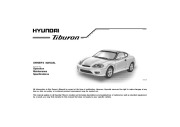 2005 Hyundai Tiburon Owners Manual, 2005 - 3 of 262
2005 Hyundai Tiburon Owners Manual, 2005 - 3 of 262 2005 Hyundai Tiburon Owners Manual, 2005 - 4 of 262
2005 Hyundai Tiburon Owners Manual, 2005 - 4 of 262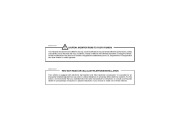 2005 Hyundai Tiburon Owners Manual, 2005 - 5 of 262
2005 Hyundai Tiburon Owners Manual, 2005 - 5 of 262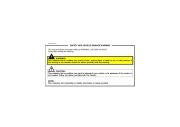 2005 Hyundai Tiburon Owners Manual, 2005 - 6 of 262
2005 Hyundai Tiburon Owners Manual, 2005 - 6 of 262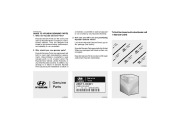 2005 Hyundai Tiburon Owners Manual, 2005 - 7 of 262
2005 Hyundai Tiburon Owners Manual, 2005 - 7 of 262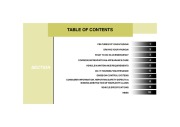 2005 Hyundai Tiburon Owners Manual, 2005 - 8 of 262
2005 Hyundai Tiburon Owners Manual, 2005 - 8 of 262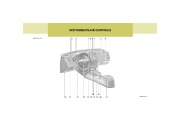 2005 Hyundai Tiburon Owners Manual, 2005 - 9 of 262
2005 Hyundai Tiburon Owners Manual, 2005 - 9 of 262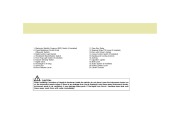 2005 Hyundai Tiburon Owners Manual, 2005 - 10 of 262
2005 Hyundai Tiburon Owners Manual, 2005 - 10 of 262